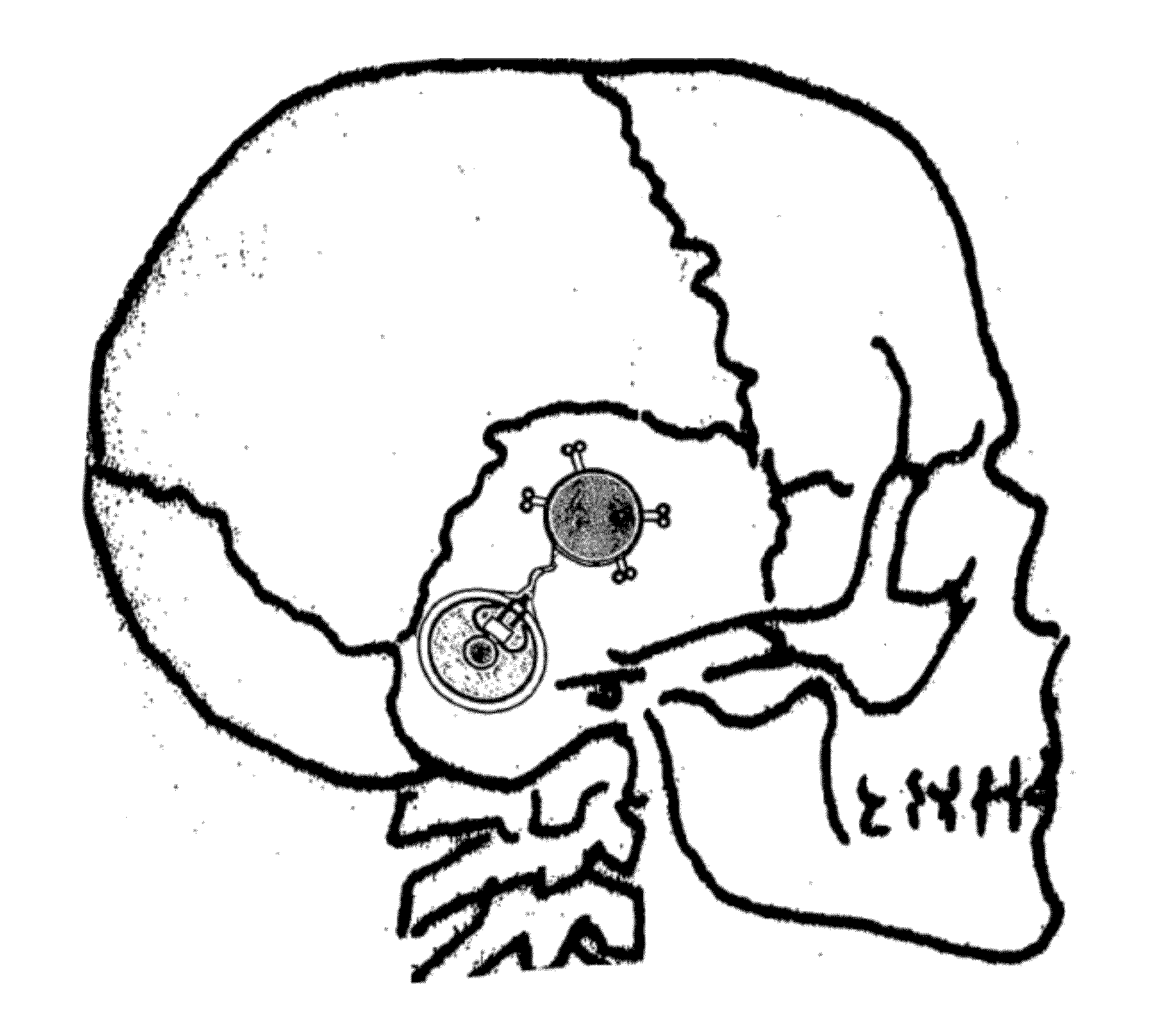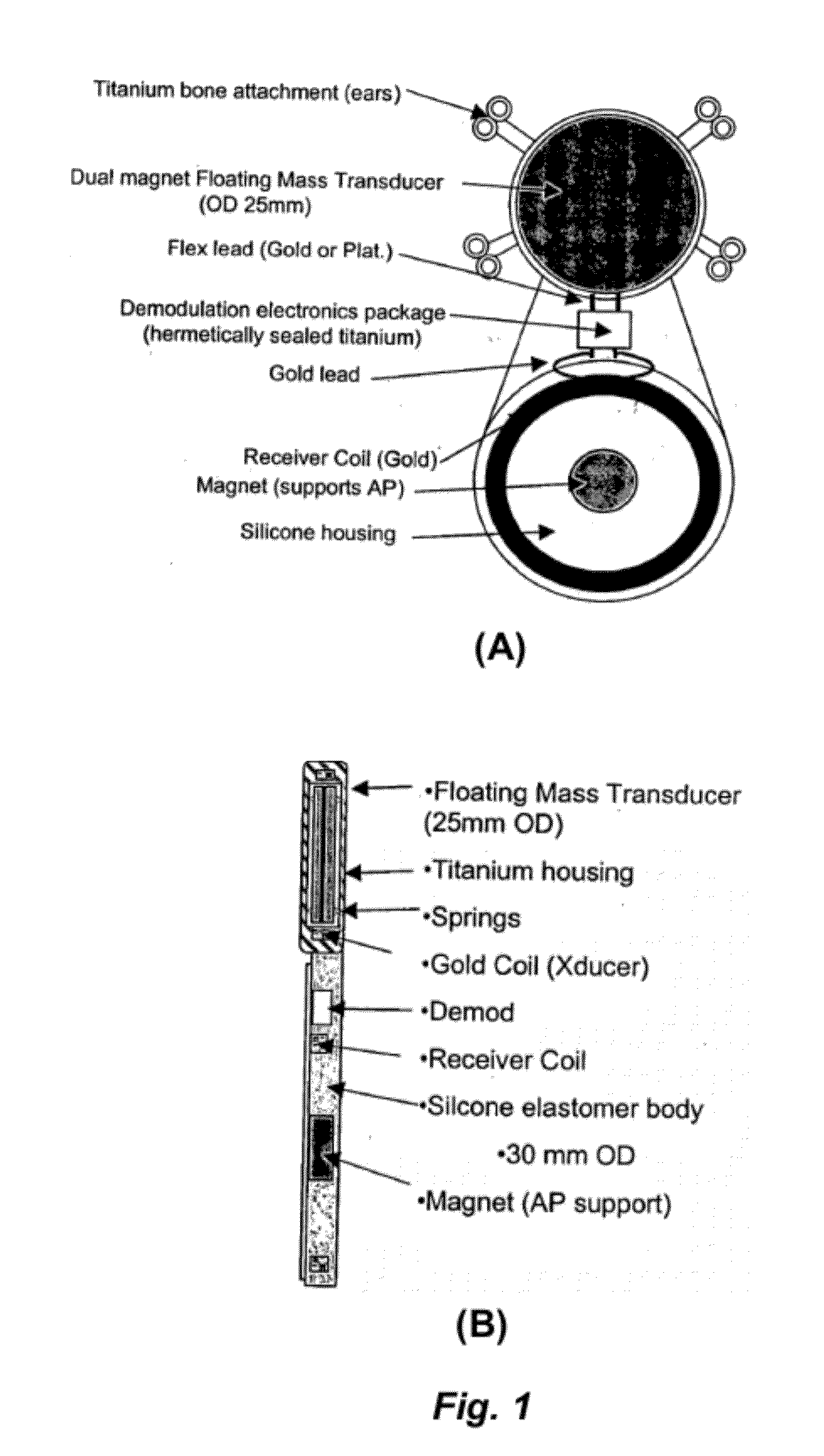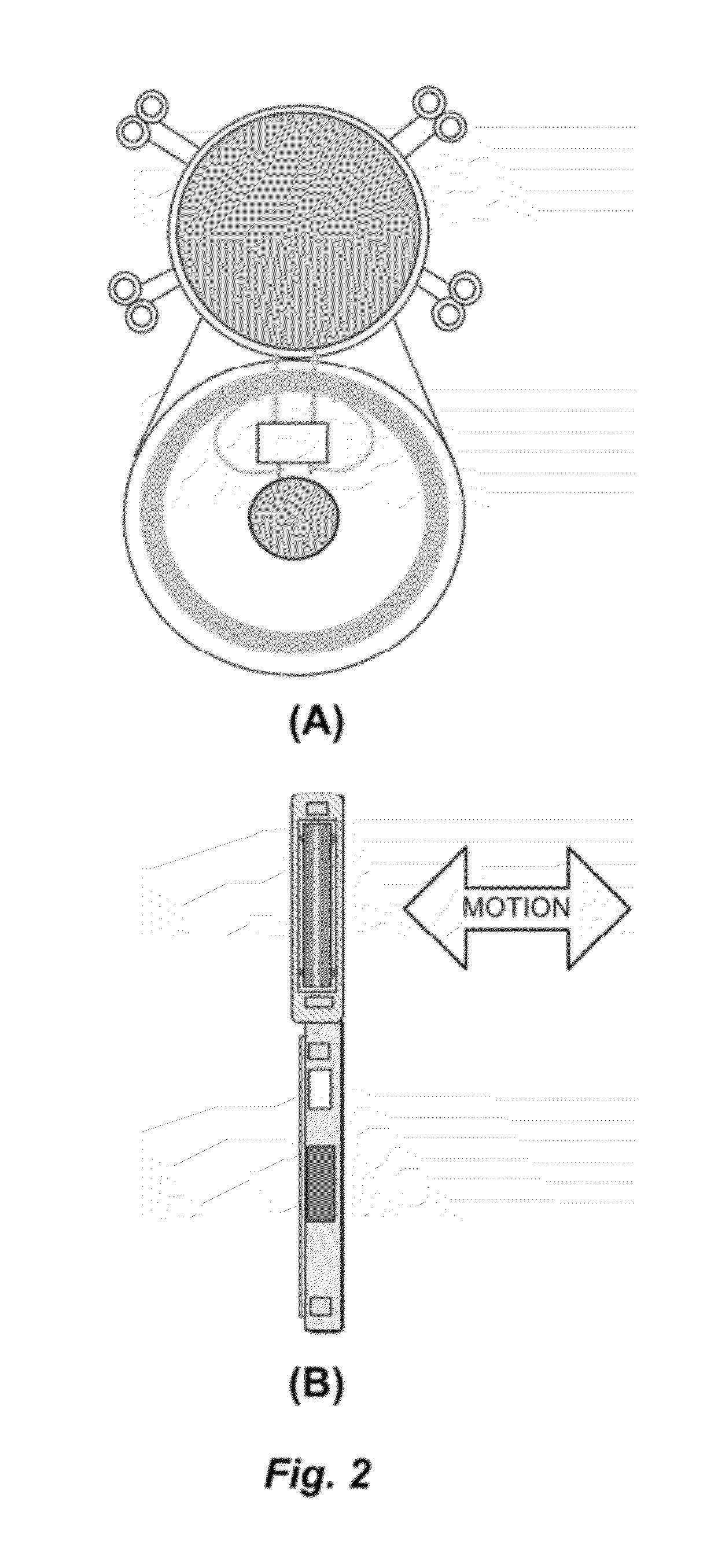Bone Conductive Devices For Improving Hearing
a bone conductive and hearing technology, applied in the direction of deaf-aid sets, electrical devices, etc., can solve the problems of damage in the inner ear or auditory nerve, and inability to detect the full intensity and quality of the sound in the inner ear
- Summary
- Abstract
- Description
- Claims
- Application Information
AI Technical Summary
Problems solved by technology
Method used
Image
Examples
Embodiment Construction
[0015]To facilitate an understanding of the present invention, a number of terms and phrases are defined below.
[0016]As used herein, the term “subject” refers to a human or other animal. It is intended that the term encompass patients, such as hearing impaired patients. Subjects that stutter are also expected to receive benefit from the hearing devices disclosed herein.
[0017]The terms “hearing impaired subject” and “hearing impaired patient” refer to animals or persons with any degree of loss of hearing that has an impact on the activities of daily living or that requires special assistance or intervention. In preferred embodiments, the term hearing-impaired subject refers to a subject with conductive or mixed hearing loss.
[0018]As used herein, the terms “external ear canal” and “external auditory meatus” refer to the opening in the skull through which sound reaches the middle ear. The external ear canal extends to the tympanic membrane (or “eardrum”), although the tympanic membrane...
PUM
 Login to View More
Login to View More Abstract
Description
Claims
Application Information
 Login to View More
Login to View More - R&D
- Intellectual Property
- Life Sciences
- Materials
- Tech Scout
- Unparalleled Data Quality
- Higher Quality Content
- 60% Fewer Hallucinations
Browse by: Latest US Patents, China's latest patents, Technical Efficacy Thesaurus, Application Domain, Technology Topic, Popular Technical Reports.
© 2025 PatSnap. All rights reserved.Legal|Privacy policy|Modern Slavery Act Transparency Statement|Sitemap|About US| Contact US: help@patsnap.com



